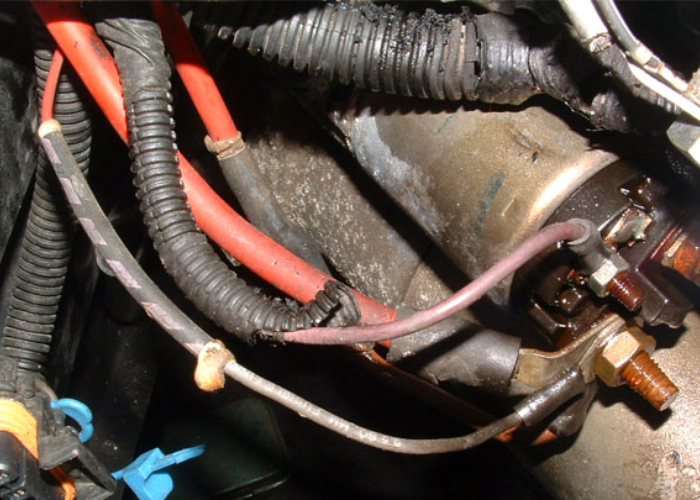
Symptoms of a Bad Fusible Link
A fusible link is one of the essential components of a vehicle’s electrical system. It is designed to protect the car from electrical damage by automatically breaking the circuit in the event of a power overload. Unfortunately, many motorists don’t realize that a faulty fusible link can cause a range of problems with their vehicle. To help you identify the issue quickly, this blog will discuss the symptoms of a bad fusible link.
What is a Fusible Link?
A fusible link is an important safety feature in cars and other vehicles. It is a short length of wire that is designed to melt and break the circuit if the current passing through it exceeds a certain level. This is done to protect other components and wiring from being damaged by an overload.
The link can be made of metal or ceramic, depending on the current it is designed to handle. The most common type of fusible link is the metal type, which is used in most vehicles and can be found in the engine compartment. They are usually located near the battery, alternator, or starter motor.
When a fusible link fails, it can cause serious issues in the electrical system of the car, and it is important to be aware of the symptoms so that the problem can be identified and fixed quickly.
Common signs of a faulty fusible link include lights flickering or dimming when the engine is running, or no power at all to certain components. Another sign is if the starter motor will not turn over the engine. If the fusible link has completely melted, it will need to be replaced.
Common Symptoms of a Bad Fusible Link
Common Symptoms of a Bad Fusible Link: The most common symptom of a bad fusible link is a failure of the system it is protecting. This can be a result of the link melting due to overheating or a short circuit.
If the link is melted or burned, then it will no longer protect the system from further damage. Other symptoms include an illuminated warning light or an abnormally high-temperature reading on the dash.
These can be indicators of a faulty fusible link and should be investigated immediately. Additionally, if the link is not replaced promptly, then it may cause further damage to the electrical system.
Signs of a Bad Fusible Link
Signs of a Bad Fusible Link include a variety of electrical issues that can range from being a minor inconvenience to a major safety hazard. The fusible link, which is part of the vehicle’s electrical system, serves to protect the wiring and other components from damage due to excessive current.
Some of the common symptoms of a bad fusible link include a lack of power to certain components, dim headlights, and a clicking noise when attempting to start the vehicle. Additionally, there may be a burning smell coming from near the engine compartment.
It is also possible that the vehicle will not start at all, or that it will only start intermittently. If any of these symptoms are present, it is important to have the fusible link inspected as soon as possible.
Reasons for a Bad Fusible Link
There are a few potential reasons why a fusible link may become bad. First, the link may be too small for the amount of current being sent through it. This could be due to an incorrect wiring setup or a blown fuse. Second, the link itself may be damaged.
This can occur due to vibration, heat, or corrosion. Finally, the link may be old and worn out, which can cause it to become brittle and break. If the link is not replaced in a timely manner, it can cause further damage to the electrical system.
Testing and Diagnosing A Bad Fusible Link
Testing and Diagnosing a Bad Fusible Link is important in order to ensure the safety of your car. One of the first symptoms of a bad fusible link is a dead battery. If you turn the key in the ignition and nothing happens, then it’s possible that your fusible link is the cause.
Another symptom of a bad fusible link is if the car runs, but has difficulty starting. The fusible link can also cause the vehicle to stall due to an insufficient electrical current. To diagnose the issue, you’ll need to look for a melted or burnt fusible link.
You can also check the electrical current with a multimeter to determine if it is running low. If any of these symptoms are present, then it’s likely that you have a bad fusible link.
Replacing the Fusible Link
A fusible link is a safety device that is designed to melt in the event of an electrical overload, protecting other parts of the electrical system from damage. Unfortunately, a bad or damaged fusible link can cause many of the same symptoms as an electrical overload.
Replacing a bad fusible link is a relatively easy job, but it is important to be aware of the symptoms of a bad fusible link before attempting the repair. Common symptoms include irregular or sporadic electrical performance such as lights dimming, flickering, or going out completely.
If your car is equipped with an electric fuel pump, it may not turn on or it may not be able to maintain the correct pressure to deliver fuel to the engine. The car may also be difficult to start or it may start and then immediately stall. All of these symptoms can be caused by a bad or damaged fusible link.
When replacing a fusible link, it is important to make sure the replacement is the correct size and amperage for the application. If the wrong size is installed, it can cause an electrical overload, resulting in the same symptoms as a bad fusible link.
Once the replacement fusible link has been installed, the electrical system should be tested to make sure it is functioning properly. If the system is not functioning properly, it may be a sign that the wrong size fusible link was installed, and the correct one should be installed as soon as possible.




